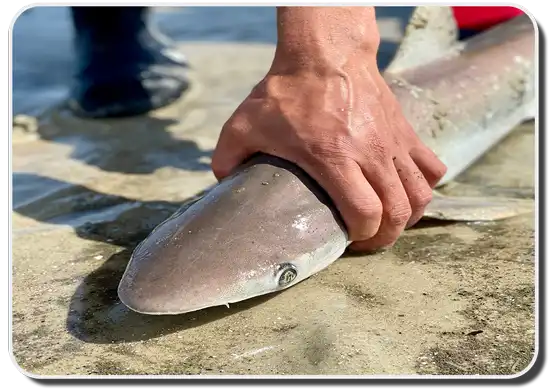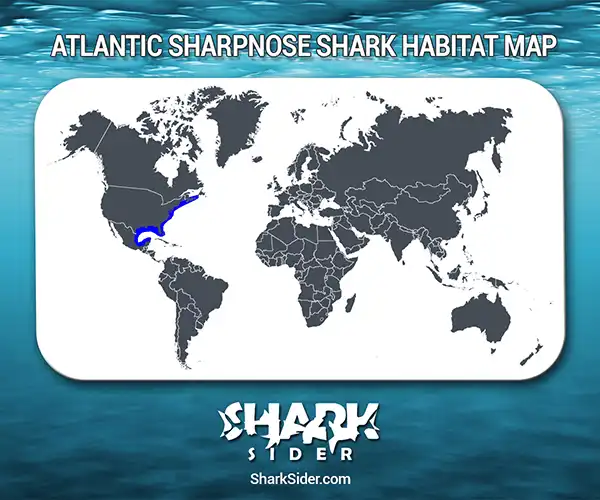As its name suggests, the Atlantic sharpnose is a requiem shark that lives in the Atlantic Ocean and has a distinct, sharply pointed snout making up 4% of its entire body length. They are abundantly fished though they have little commercial value and are preferred by fishing enthusiasts.

Atlantic Sharpnose Shark Scientific Classification |
|
| Kingdom | Animalia |
| Phylum | Chordata |
| Class | Chondrichthyes |
| Order | Carcharhiniformes |
| Family | Carcharhinidae |
| Genus | Rhizoprionodon |
| Scientific Name | R. terraenovae |
Description
This shark is relatively small, with a full grown Atlantic sharpnose ranging from 3-4 ft in length and weighing around 8 lbs. The world record for the heaviest specimen of this species is 16 lb. Their bodies are elongated, with a pointed snout that gives it their name and large eyes. There are about 24-25 rows of sharp triangular teeth in both jaws.
On the dorsal side, they are gray and white ventrally. The adults have white spots on their sides and pectoral fins, while the juveniles have black marks on their back and caudal fin edges.
Where do they live
Atlantic Sharpnose Shark Habitat Map
 These sharks are found throughout the northwestern Atlantic, all along the coasts of North America between latitudes 43°N and 18°N. The range of these sharks appears to be from New Brunswick, Canada, in the north to the Gulf of Mexico in the south.
These sharks are found throughout the northwestern Atlantic, all along the coasts of North America between latitudes 43°N and 18°N. The range of these sharks appears to be from New Brunswick, Canada, in the north to the Gulf of Mexico in the south.
Like other requiem sharks, they prefer shallow waters of around 33 ft. However, there have been unverified reports of this shark appearing at depths of 920 ft.
Behavior
Dietary
They have a vast palette, including crabs, mollusks, shrimps, worms, and a wide variety of small bony fish like eels, filefish, jacks, menhaden, silversides, toadfish, and wrasses.
Predatory
These sharks tend to forage for prey inshore and commonly hunt in the surf zone.
Social
Atlantic sharpnoses tend to form schools of three sharks of the same sex.
Reproductive
They are viviparous, giving birth to a litter of 1-7 pups on average after almost a year of gestation. Copulation occurs in shoals throughout the year, but females migrate to deeper waters after mating. They return to shallow waters like bays, estuaries, and surf zones to give birth. Newly born Atlantic sharpnoses are around 11.4-14.6 inches long.
Sexual maturity is observed in juvenile males at 2-2.4 years and 2.4-2.8 years in females. They are 31.5 – 35.5 inches long during this period. These sharks generally live for 18 years.
Adaptations
Their streamlined bodies let them swim at incredible speeds. They regularly reach five miles per hour, becoming even faster when hunting and avoiding predation from larger sharks like tiger sharks.
Interactions with humans
While these sharks may often come into contact with humans, they are not very dangerous, and attacks from them are not fatal.
These sharks are often fished for their meat and sport. But due to their smaller fins, they aren’t considered as valuable as sharks like the sandbar shark. Most Atlantic sharpnoses tend to be picked up as bycatch by shrimp trawlers. Due to the low threat posed by human activities, the IUCN classifies this shark as “Least Concern” or “LC”.
Atlantic sharpnose sharks can be kept in aquariums with ample space like tanks or round or oval-shaped ponds.
